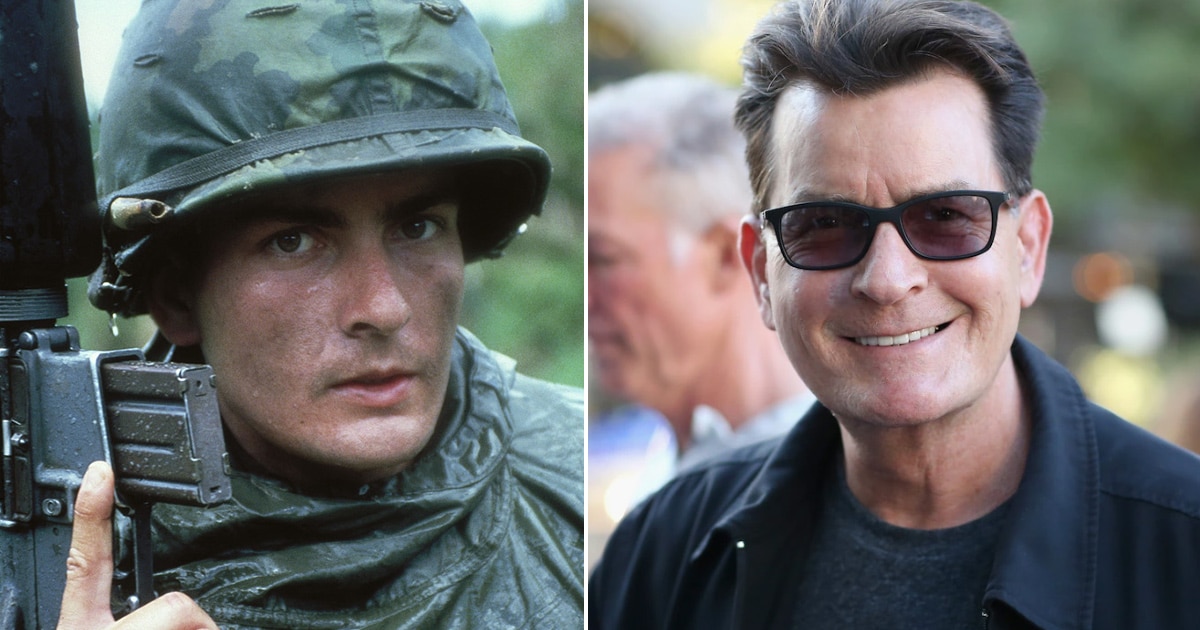There’s no shortage of films set during the Vietnam War, but few manage to capture the true horror and raw emotion of conflict as well as Platoon. Perhaps this is to be expected. It is, after all, the only major Vietnam movie to have been written and directed by someone who was actually there: Oliver Stone, who served in the controversial conflict before becoming a filmmaker.
With scenes that are both tragic and traumatic, Platoon is a film that’s hard to watch yet which leaves you unable to look away. We’re investigating some of the lesser-known, behind-the-scenes facts about this Oliver Stone classic.
30. The scene where Chris saves a Vietnamese girl from assault is based on Oliver Stone’s own experiences

Oliver Stone was both the writer and director of Platoon, which was one of many films made in the 80s about the Vietnam war. Unlike a lot of other filmmakers dealing with the subject matter, Stone had firsthand experience as he served in the conflict as an infantryman. Platoon is largely based on Stone’s genuine experiences, with some incidents drawn directly from real life.
One such scene directly based on reality comes when Charlie Sheen‘s Chris saves a Vietnamese girl from being assaulted. Stone did much the same thing when he was in Vietnam, intervening to stop a similar assault from taking place. It makes you realise how terrifying the entire ordeal must have been, even beyond the combat itself.
29. The actors wrote their own messages on their helmets
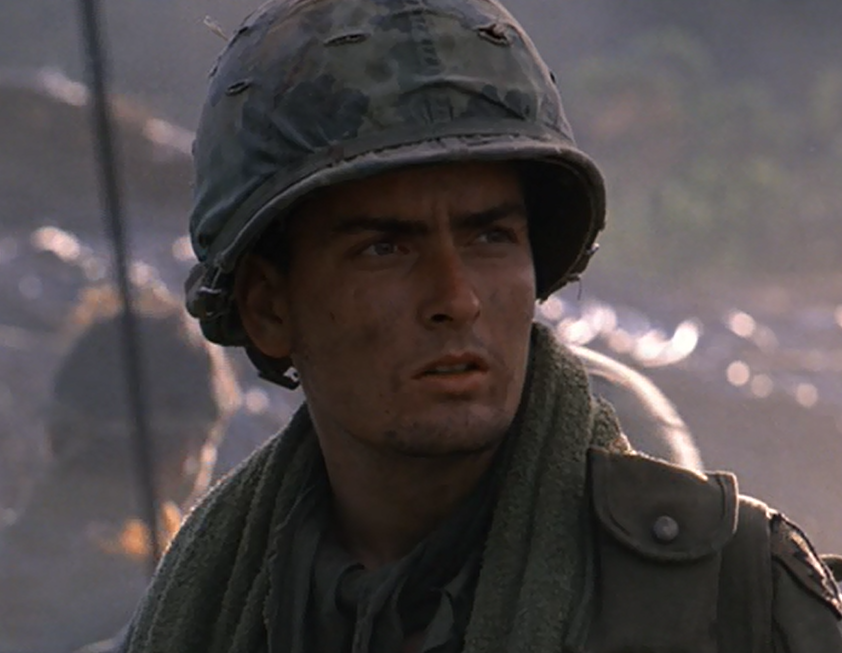
Movies about the Vietnam War have often highlighted the practice of soldiers writing personalised messages on their helmets. This was done in Platoon, and for a more authentic personal touch, the actors wrote messages they came up with themselves. For his, Charlie Sheen wrote: ‘When I die, bury me upside-down so the world can kiss my a**.’
This can be seen to fit both the gung-ho spirit of Sheen’s character in the movie, as well as his own infamously volatile personality in real life. Johnny Depp’s helmet features an arrow-pierced heart containing the initials ‘S.F.’ referring to his then-girlfriend, actress Sherilyn Fenn. Another famous personalised ‘Nam helmet can be seen in Full Metal Jacket, in which Matthew Modine’s helmet reads ‘Born to Kill’.
28. Oliver Stone first tried to get the film made in 1969 with Jim Morrison in the lead

It’s not unusual for films to take a long time to get made, but Platoon took a lot longer than some. Oliver Stone wrote the first draft of the script – originally entitled Break – all the way back in 1969, shortly after his tour of duty in Vietnam ended. Not long thereafter, the ambitious young writer sent the script to Jim Morrison, frontman of The Doors.
Stone hoped Morrison would be interested in playing the lead role in the movie – but nothing came of this. Morrison died in July 1971, and the copy of Stone’s script was actually in the musician’s Paris apartment at the time of his death. Stone was finally given back this copy of the script in 1990, when he was making The Doors, starring Val Kilmer as Morrison.
27. The film was almost made in the 70s by Sidney Lumet and Al Pacino
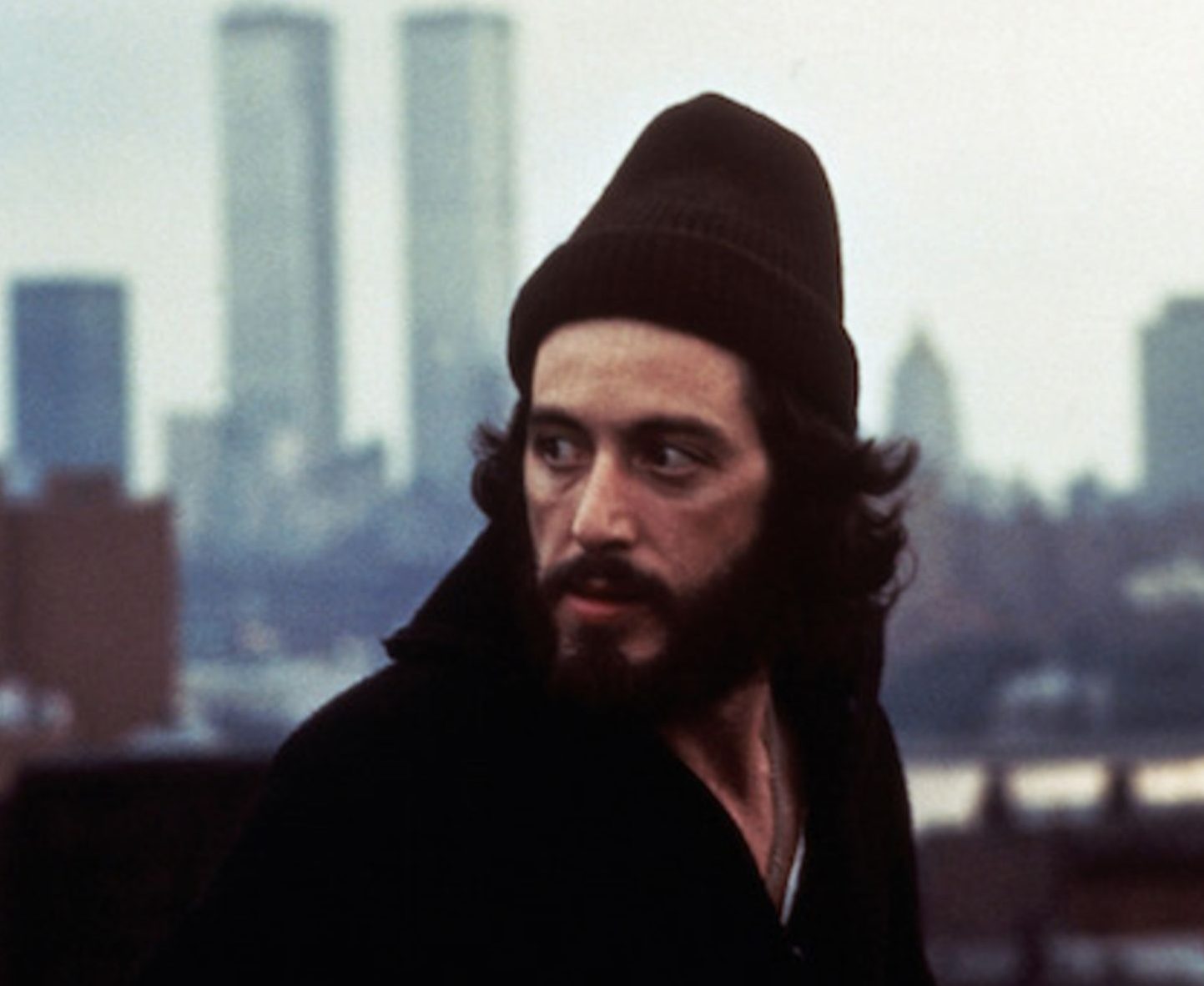
By Oliver Stone’s own admission, the early script for what became Platoon was very far removed from the film he ended up making. As Stone recalls, there was a fantasy element: “The character dies in Vietnam and goes to the Underworld… I couldn’t deal with Vietnam yet in a completely realistic way at that point.”
Stone later rewrote it into something more realistic, and this draft of the script wound up in the hands of director Sidney Lumet. The acclaimed filmmaker had directed Al Pacino in the 70s classics Serpico and Dog Day Afternoon, and at one point planned to work with Pacino again on Platoon. However, Stone says that draft of Platoon was “just not considered upbeat enough. It was too realistic.” Then, following the success of Vietnam movies Apocalypse Now and The Deer Hunter, “the feeling was our moment had passed.”
26. Keanu Reeves, Mickey Rourke and Nick Nolte all turned down leading roles

Once the wheels finally got in motion on Platoon, Oliver Stone and company met with plenty of notable actors. However, not everyone that the director liked for the project said yes to the roles they were offered. Stone originally wanted Mickey Rourke for the role of Barnes, and Nick Nolte for Elias.
However, both actors turned the roles down, clearing the way for Tom Berenger and Willem Dafoe. Meanwhile, an early contender for the role of Chris was Keanu Reeves – but the director says “Keanu turned it down because of the violence.” (Ironic, considering Reeves is now best known as John Wick.) Reeves wasn’t Charlie Sheen’s only competition for the role: his own brother Emilio Estevez came close to being cast instead.
25. Oliver Stone was so highly strung, at one point he accused the editor of losing footage he hadn’t actually shot yet
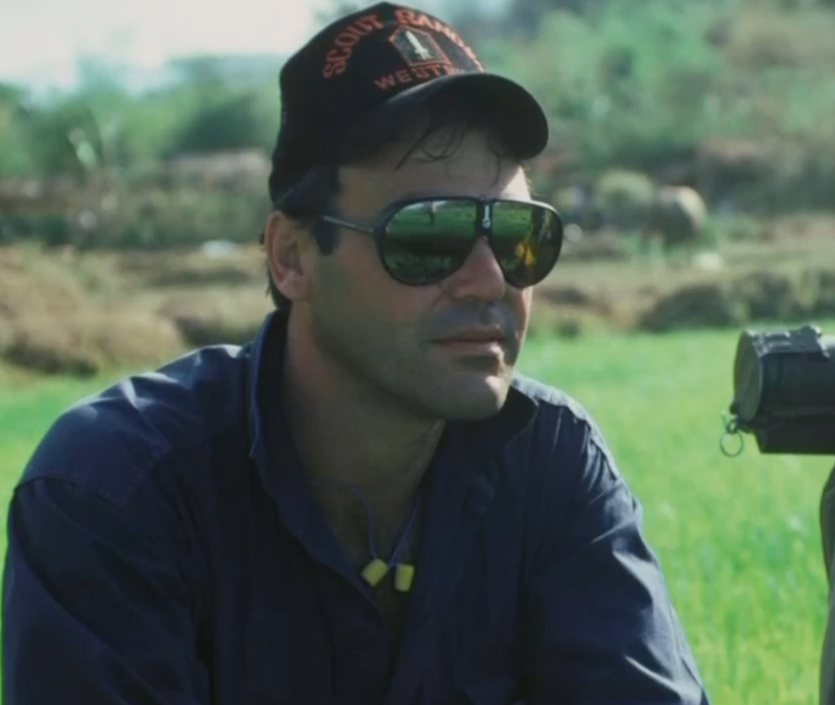
As we’ve established, writer-director Oliver Stone took his work very seriously indeed when making Platoon. The filmmaker got very highly strung during production, and would frequently vent his frustrations on the cast and crew. While all this was going on, Stone wasn’t getting much rest, and this evidently had some impact on his state of mind.
At one point, the filmmaker started to panic when he couldn’t find the footage from a particular scene. Enraged, he furiously berated his editor Claire Simpson, accusing her of taking the footage and hiding it. Simpson then had to explain to Stone that he couldn’t find that footage because the scene in question hadn’t been shot yet.
24. Political unrest in the Philippines almost shut down production
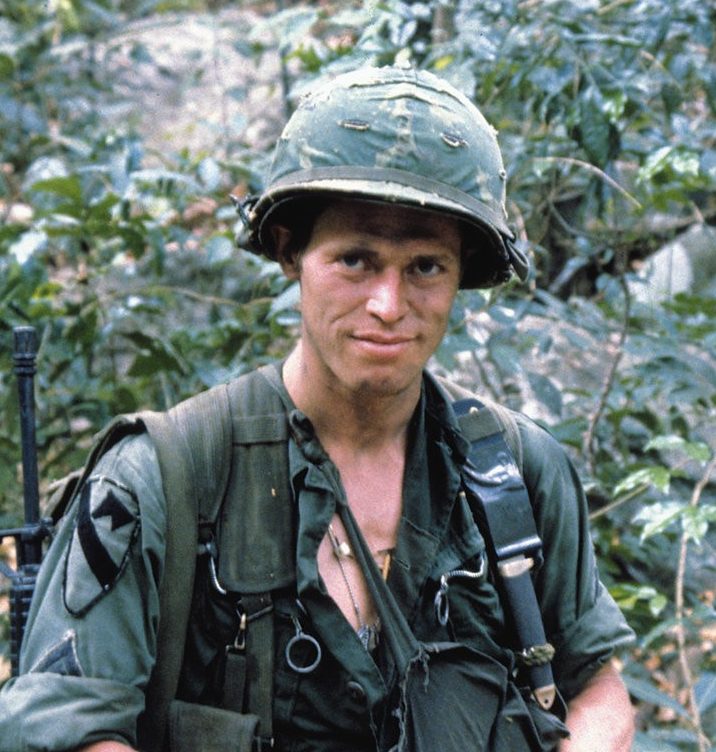
Platoon is one among a great many Hollywood movies set in Vietnam which were instead shot in the jungles of the Philippines. However, while this South-East Asian republic was more welcoming to American filmmakers, it was not without its own troubles. Production on Platoon came close to being scrapped when a revolution broke out in the Philippines immediately before the film was due to start filming.
The movement known as The People Power Revolution broke out in February 1986, and saw long-standing dictator Ferdinand Marcos overthrown. Ultimately this only wound up delaying production on Platoon by a week; Stone says the filmmakers merely had to “make new deals with the new military.” Even so, making the film in the shadow of this very real turmoil only served to intensify the shoot further.
23. Keith David saved Charlie Sheen’s life when a helicopter shot went wrong
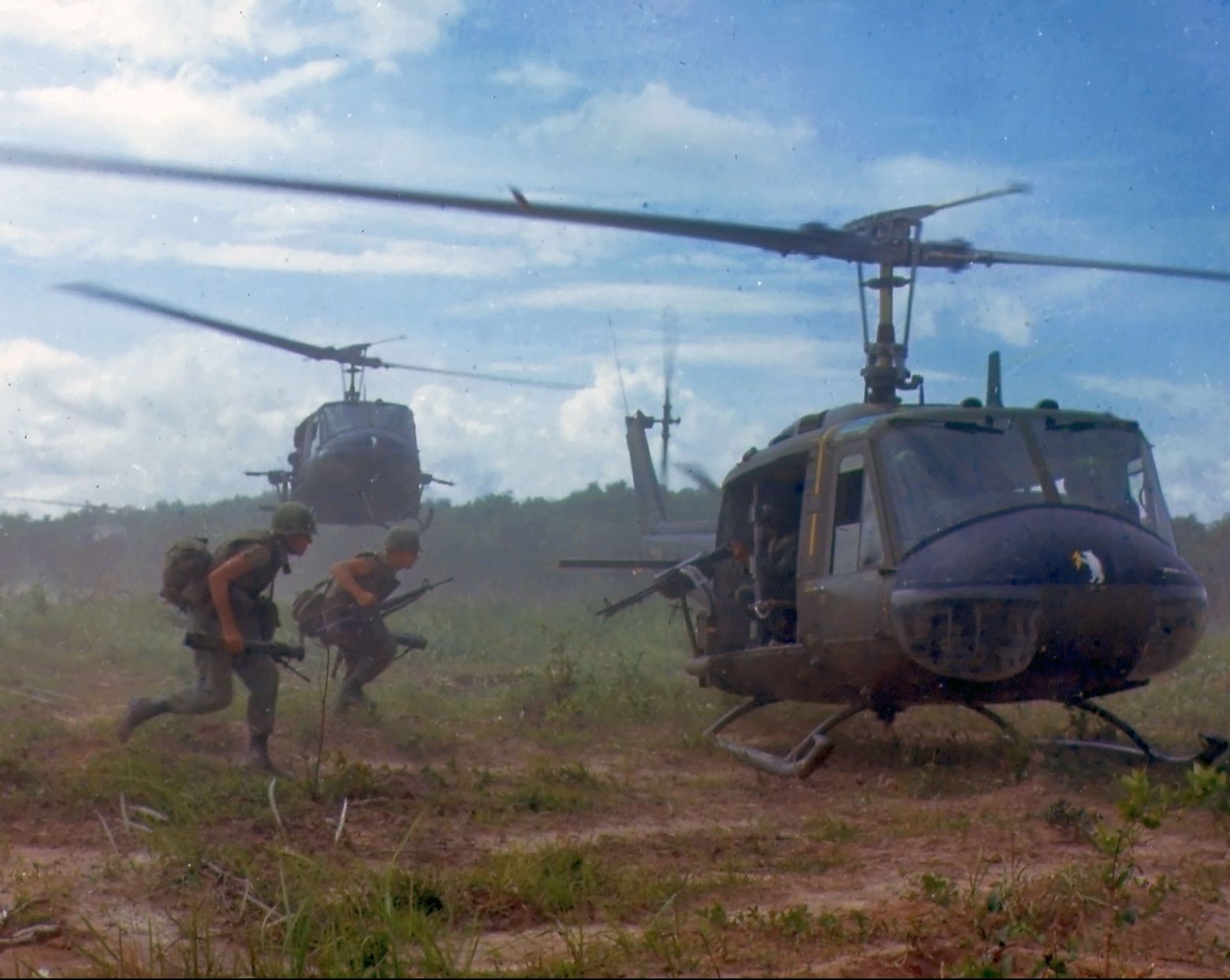
As with any film that involves stunts and combat sequences, production on Platoon was not without its risks. Charlie Sheen recalls that one hairy moment almost saw him thrown out of a helicopter. The cast were filming in an open-door gunship high off the ground, when the vehicle unexpectedly banked hard to one side.
Sheen lost balance and fell toward the open door – but his co-star Keith David caught him. As Sheen would almost certainly have fallen out of the helicopter otherwise, the actor has since praised David for saving his life. Sheen and David would go on to co-star in two more movies, Men at Work and Loose Women.
22. The actors actually smoked illicit substances before shooting the drugs scene

Another aspect of the Vietnam war that has been widely documented in movies is drug use among American soldiers. This also comes up in Platoon, and one sequence sees several of the soldiers smoking a certain illicit substance. Of course, it’s also well known that plenty of people in Hollywood aren’t averse to that kind of behaviour either.
It may not be too surprising, then, that a number of the actors decided to go ‘method’ in this scene and partake in the substance in question for real. Things didn’t quite go to plan, however, as they smoked while things were being set up to shoot the scene, which took longer than expected. As a result, most of the actors had come down from their high by the time they stepped in front of the cameras and simply felt awful.
21. The film’s most iconic image was based on a real photograph taken in Vietnam
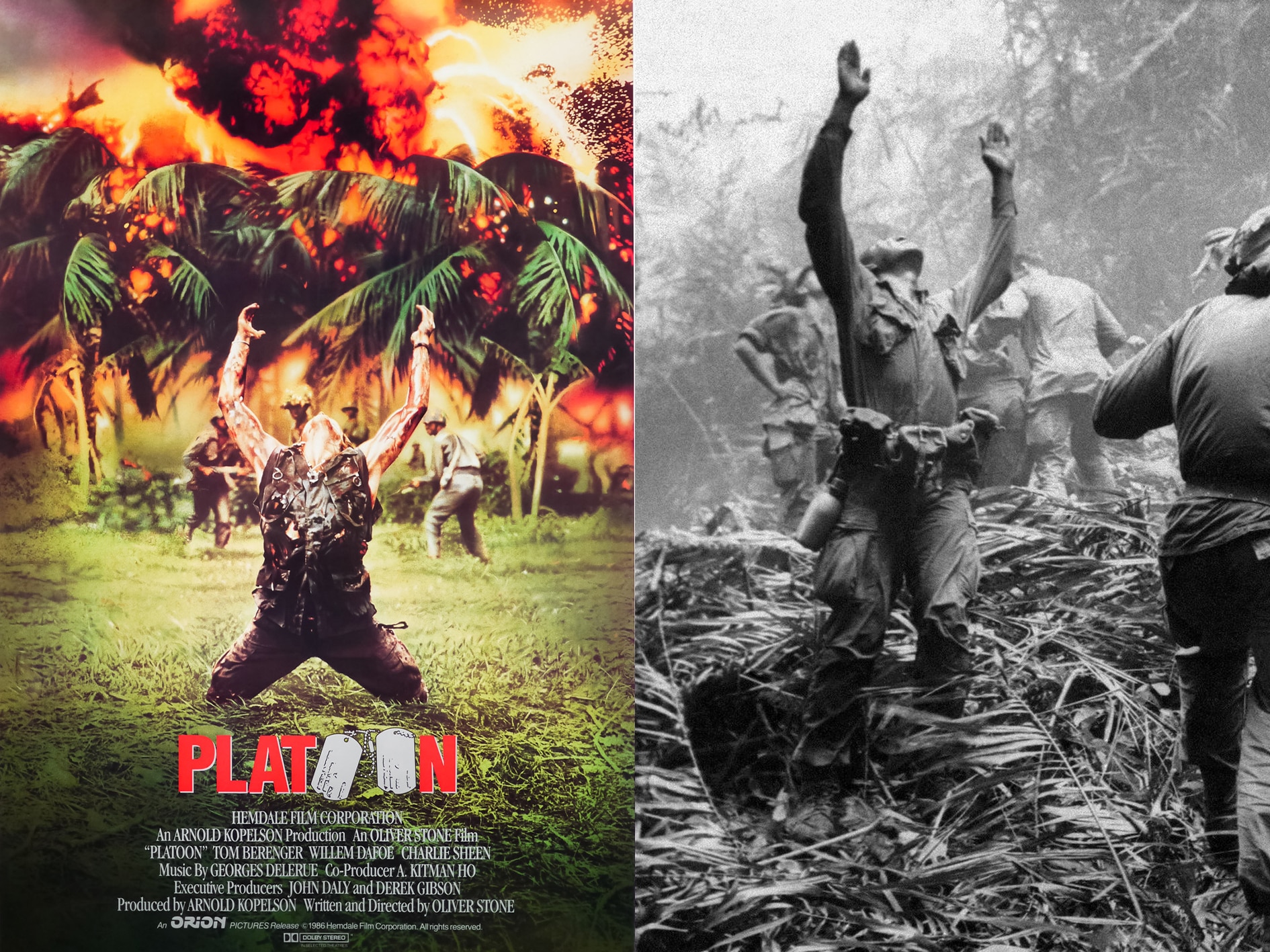
The release of Platoon was announced to cinemas around the world with one of the most famous posters ever. The image, which can also be seen in the movie itself, shows a soldier on his knees with his arms stretched in the air in desperation. This has gone down in history as one of the most iconic and powerful movie images of all time.
However, while this image may be synonymous with Platoon today, director Oliver Stone does not deserve all the credit. The shot was closely modelled on a real photo from the Vietnam war, taken by war photographer Art Greenspon in 1968. The photograph has been widely hailed as one of the defining images of the infamous conflict.
20. Stone used imported earth from Vietnam for greater authenticity

As he had served in Vietnam himself, director Oliver Stone was anxious to make Platoon as true to life as he could. The level of attention to detail went perhaps a bit further than you might have expected, however. Platoon was shooting in the jungles of the Philippines, which had doubled for Vietnam in many movies before and since.
However, Stone felt one detail in the Philippine jungle just didn’t match his memory of Vietnam: the dirt. Because of this, red soil that more closely resembled that of the Vietnamese jungle was especially imported for use on set. Naturally this detail would be lost on all but the most knowledgable viewer, but this level of attention to detail is part of what sets the film apart.
19. Oliver Stone was deliberately rough on the cast so they’d understand the true misery of war
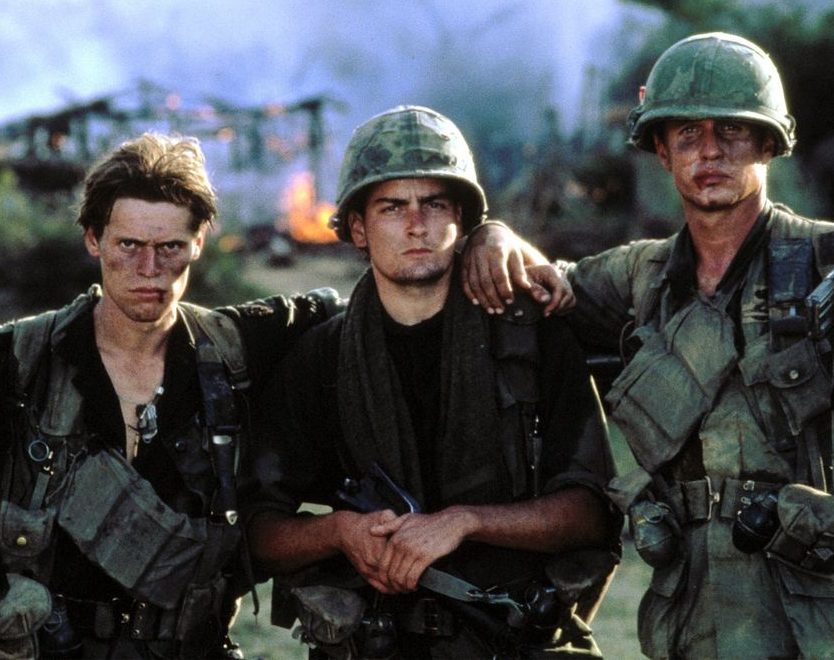
By all accounts, shooting Platoon wasn’t a barrel of laughs for the cast and crew. A lot of this was reportedly down to director Oliver Stone himself, who is said to have been a ruthless taskmaster. Prior to filming, the director ordered the cast be subjected to a gruelling two weeks of intensive training.
This wasn’t to get them to bond or physically fit for the movie, but to deprive them of sleep and make them so exhausted that they genuinely struggled to endure the shoot. Actor John C. McGinley has been quoted as saying that the whole cast hated Stone all the way through the shoot of the film. However, the cast also recognised that this was Stone’s intention, as he wanted to make them feel something close to the true misery of war.
18. Willem Dafoe became ill drinking river water
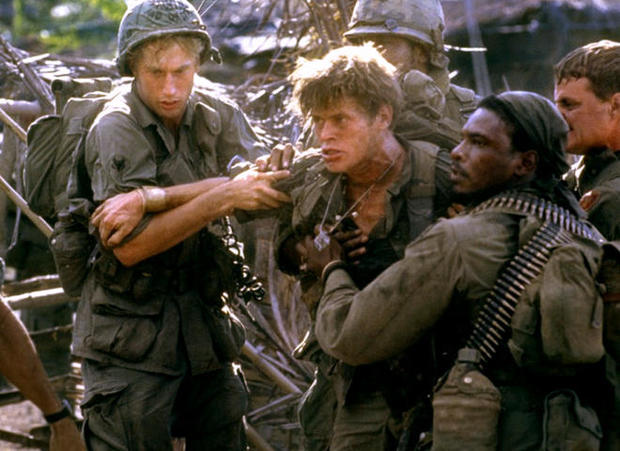
In one scene, a character is warned not to drink water from the river lest they contract malaria. Unfortunately, actor Willem Dafoe chose to disregard this advice whilst shooting on location in the Philippines. Dafoe was feeling thirsty in between shots whilst shooting near a river, and drank directly from the open water.
What Dafoe didn’t know at the time was that a little bit upstream for him, there was a dead pig in the water. The good news for the actor was that he didn’t wind up contracting malaria. However, the toxicity of the water was still enough to leave Dafoe terribly sick for the 24 hours that followed.
17. Tom Berenger’s make-up took three hours every day

Tom Berenger’s Sergeant Barnes is made all the more distinctive and imposing by his severe facial scars. As Platoon was striving for authenticity, efforts were made to ensure Barnes’ scars looked as realistic as possible. As a result, Berenger had to spend close to three hours in make-up every day of the shoot.
The time getting the make-up applied, and the discomfort once it was on, naturally made Berenger’s experience on the already intense set even more laborious. Reportedly as the actor and the make-up team got accustomed to the process, they could get it done in less time. It has been said that Berenger would try to avoid getting the make-up applied when it wasn’t entirely necessary, i.e. when his face wasn’t in shot.
16. Oliver Stone suffered from PTSD during filming
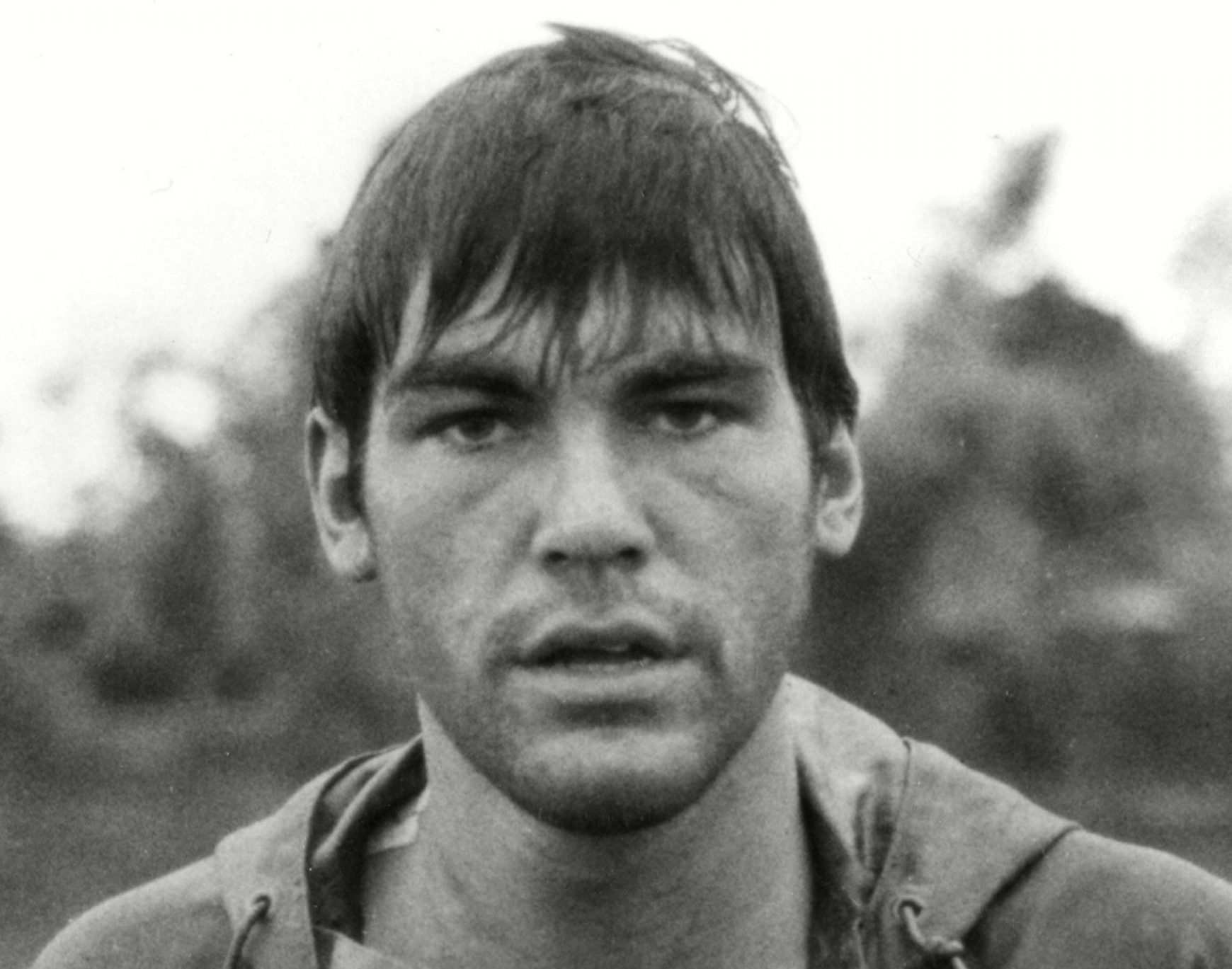
Oliver Stone went out of his way to ensure the Platoon shoot was intense for the cast and crew. However, given the filmmaker’s personal history, making the movie proved traumatic for Stone himself too. Stone enlisted in the US Army during the Vietnam War, and was wounded twice in the line of duty.
Recreating the war on film brought the experience back, and the director had an attack of post-traumatic stress disorder. This was witnessed by the film’s military advisor, Dale Dye, who was also a veteran of the war. The two men shared their Vietnam experiences and, with Dye’s help, shooting was able to continue.
15. Johnny Depp nearly vomited from the stress of filming
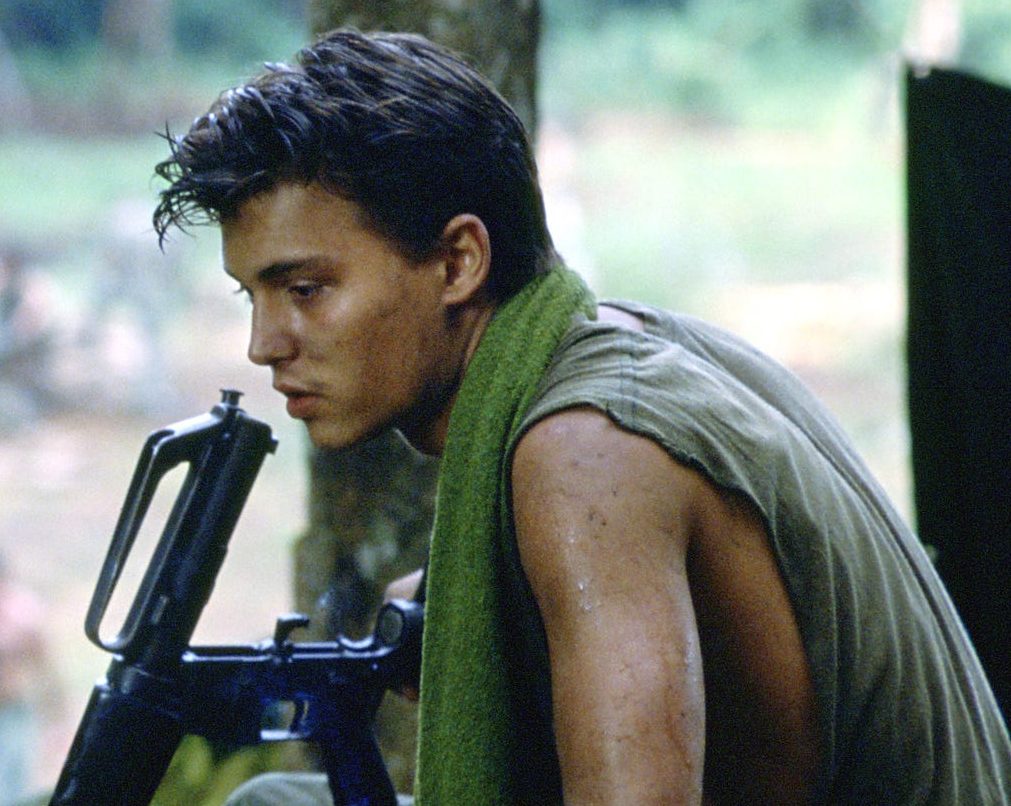
As we all know, Johnny Depp went on to become one of the biggest movie stars in the world following Platoon. However, when he was cast in Platoon, Depp was a fairly green 22-year-old actor who’d never even left the United States before. Platoon was only Depp’s third movie, and it proved to be extremely stressful for the actor at times.
During one particularly rough sequence, director Oliver Stone’s aggressive manner almost reduced Depp to vomiting. Despite this, the unrelenting Stone still demanded Depp do a second take immediately afterwards. It came to light years later that Depp planned to take revenge on Stone by urinating on him from a hotel balcony window, until an assistant director talked him out of it.
14. Forest Whitaker genuinely tumbled shooting the opening scenes
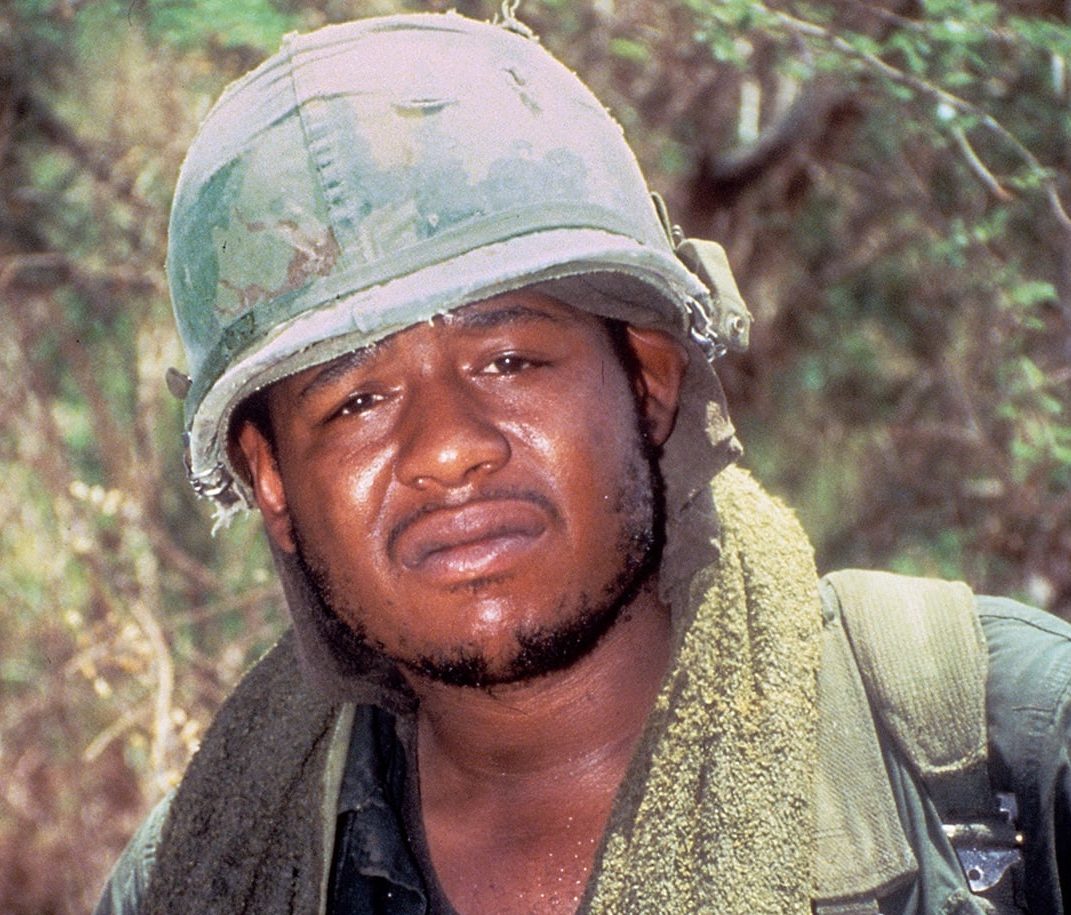
Another future big-name Hollywood actor who got one of his first major roles in Platoon was Forest Whitaker. Whitaker had made three films prior to landing the role of Big Harold in the Vietnam epic. When Whitaker is first seen in Platoon’s opening credits, there was a moment which wasn’t planned.
This comes when Whitaker slips and falls down a hill, which the actor says was a genuine accident. Although this moment was not scripted and Whitaker hadn’t been directed to fall, the moment was kept in the film. The role helped Whitaker on his way to stardom, and 21 years later he would win the Best Actor Oscar for The Last King of Scotland.
13. The voice of the real ‘Good Morning, Vietnam’ DJ can be heard at one point
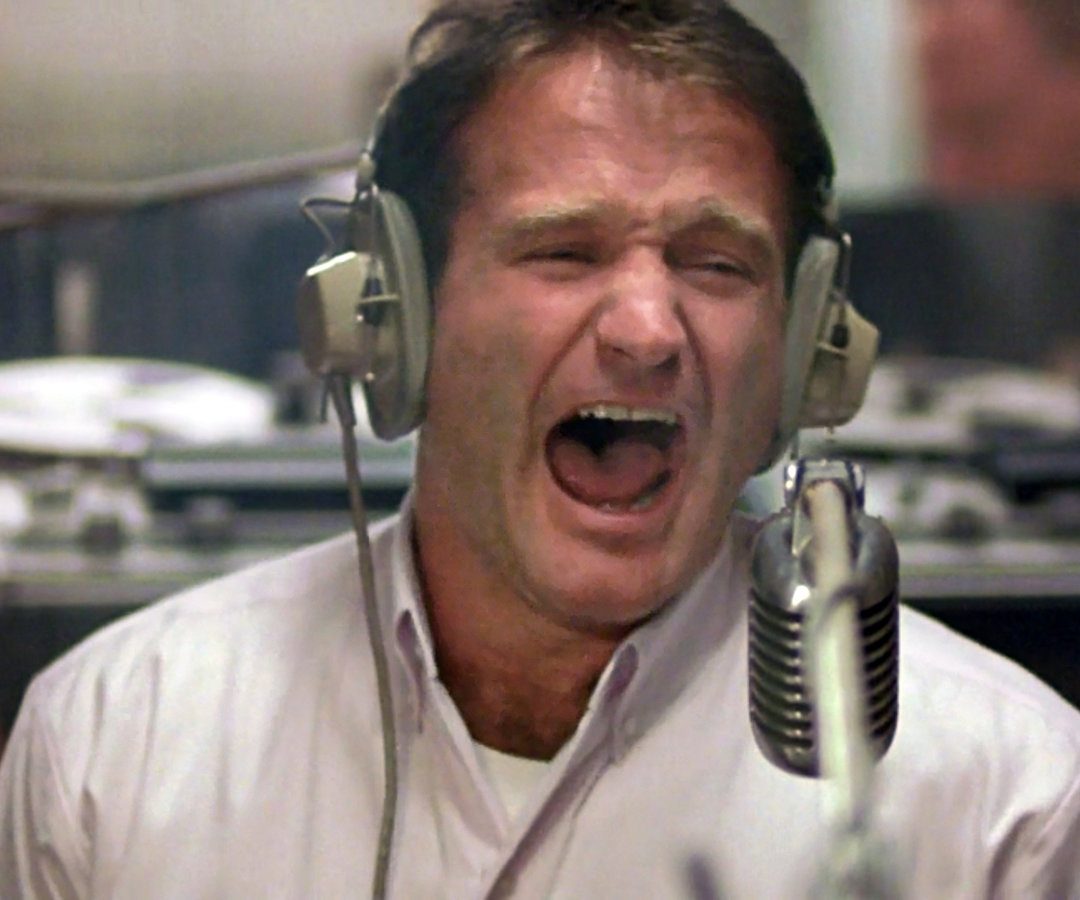
At one point in Platoon, the words “Good morning, Vietnam” can be heard over the radio. These are the words of Adrian Cronauer, the USAF radio DJ whose story and catchphrase was later immortalised on film. In 1987, one year after Platoon was released, Robin Williams took the lead role in comedy drama Good Morning, Vietnam.
Directed by Barry Levinson, the film was developed from an original script written by Cronauer himself based on his real wartime experiences. Good Morning, Vietnam was almost as big a hit as Platoon, earning $123.9 million and landing Robin Williams a Best Actor Oscar nomination. Good Morning, Vietnam also shares an actor with Platoon: Forest Whitaker appears in both films.
12. Willem Dafoe and Tom Berenger were deliberately cast against type as hero and villain

In casting Platoon, director Oliver Stone made a point of subverting audience expectation and getting something new from his actors. Because of this, he cast two of his principal actors – Willem Dafoe and Tom Berenger – completely against type. Prior to Platoon, Berenger had mainly played sympathetic good guys, in such films as The Dogs of War, Fear City and The Big Chill.
Rather than again casting Berenger as a nice guy, Stone gave him the role of the sadistic Sergeant Barnes. Willem Dafoe, on the other hand, had usually played the villain (in movies like Streets of Fire and To Live and Die in LA), but in Platoon he plays the caring and compassionate Sergeant Elias. That directorial sleight of hand worked, as both Berenger and Dafoe received Best Supporting Actor nominations at the Academy Awards.
11. Lieutenant Wolfe is used as a bad example of leadership in real military leadership classes

Lieutenant Wolfe, played in the film by Mark Moses, is one of the most interesting side-characters in Platoon. Rather than being jaded and aggressive like Sergeant Barnes, or measured and compassionate like Sergeant Elias, Wolfe is less experienced than both but in a far more senior position. Wolfe having seniority but not the experience to make the right decisions gets the characters into trouble over and over again.
The platoon are put in danger when Wolfe accidentally directs an artillery strike on his own unit, and it is Wolfe who decides to torch the Vietnamese village. Wolfe’s inexperience and bad decision-making skills are so obvious in the film that the US military has allegedly used videos of the character during officer training. These videos are designed to illustrate the fact that Wolfe does exactly what a military leader shouldn’t do: he constantly shows his inexperience, makes rushed decisions and doesn’t successfully gain the respect and loyalty of others.
10. The whole cast were required to do two weeks of basic training
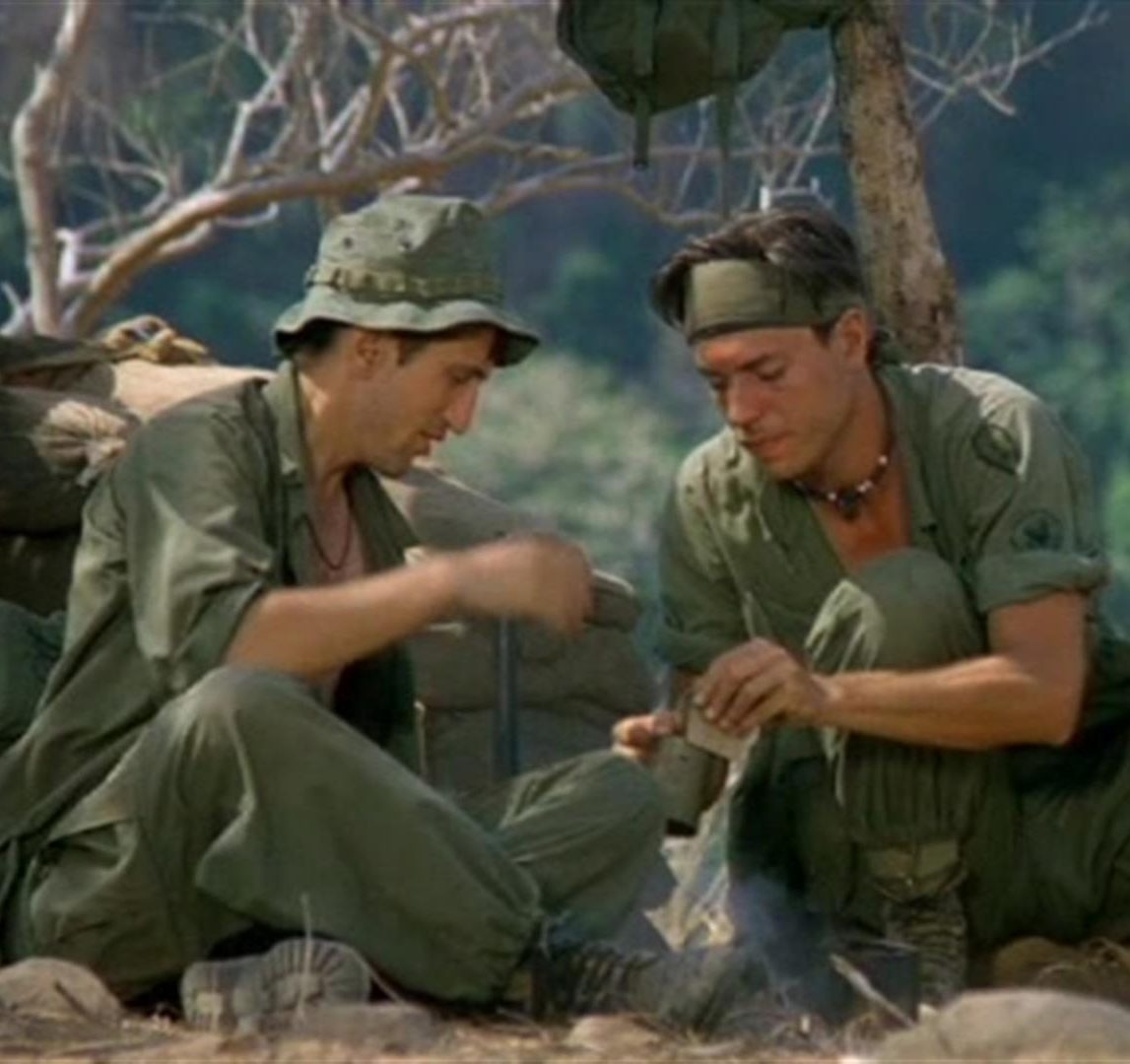
Shooting Platoon was a mostly miserable experience, with the cast dealing with uncomfortable conditions as well as being constantly berated by the director. One not-so-fun fact is that Charlie Sheen even kissed the ground when his plane touched down in America after shooting, as he was so grateful to be done with the film. What you may not know is that the misery started even before shooting, as the cast were required to complete two weeks of basic training, with filming starting the literal next day.
During this time the actors were all given military haircuts, banned from showering or using real toilets, and ate only genuine military rations. As if that wasn’t bad enough, the group were made to march wearing backpacks containing real weight and were even assigned a night watch rota, which they had to stick to. Once basic training was over, the actors were required to start filming the next day, so that they would not “lose their edge”. Yikes.
9. It was one of three major Vietnam films to be released within nine months

Hollywood has been a slave to trends ever since its early days, whether that means disaster movies, monster flicks or big-budget extended universes featuring superheroes. Often these trends are subtly impacted by real events, while other times they are overtly affected by them. After the Vietnam War ended, many filmmakers wanted to document and immortalise their own experiences, or their own opinion of the conflict.
This led to a glut of Vietnam War movies all being released at around the same time, with three even hitting theatres within the same nine-month period. The three movies in question were Platoon, Stanley Kubrick’s Full Metal Jacket, and John Irvin’s Hamburger Hill. Unusually, all were acclaimed. Of the three, Hamburger Hill was the only one not to receive any Academy Award nominations, though it does boast a rare 100% on Rotten Tomatoes.
8. Ben Stiller was rejected from the movie because Oliver Stone thought he was “too cute”

Many actors were offered parts in Platoon and simply turned them down, whether out of respect for real veterans or just because they didn’t want to shoot in such brutal conditions. On the other hand, many other actors auditioned for roles in the movie, and were knocked back or turned down outright for being too young or simply not a good fit for the project. With that said, alone among the hopefuls was Ben Stiller, who wasn’t even allowed to begin his audition before being told ‘no’.
Stiller entered the audition room and was ready to read his lines, but was immediately stopped by director Oliver Stone before he could utter a word. Stone reportedly told Stiller that he looked “too cute” to appear in the movie, which no doubt annoyed Stiller. Stiller later went on to parody movies like Platoon in Tropic Thunder and parodied Oliver Stone directly with a segment called Oliver Stoneland on The Ben Stiller Show.
7. The moment where Chris sees a struggling buffalo was the hardest scene to film

No movie is a breeze to film, but war movies, in particular, are no mean feat. Expert attention has to be paid to accuracy, from weaponry and costuming to correct terminology. Not only that, but war movies often require a lot of pyrotechnics, practical effects and stunt coordination, which can result in very complex shoots. With all that said, despite the many other complications involved in shooting Platoon, the old adage still applied.
Meaning that the showbiz rule of “never work with children or animals” held true, as it was an animal that caused the most trouble on set. Specifically, the scene where Chris looks up and sees a huge buffalo was almost impossible to get right, as the animal kept moving and trying to shake the vegetation out of its horns. In the end, one of the animal’s legs had to be tethered to a post, just to keep it still long enough for the crew to capture.
6. We only see roughly 12 of Chris’ 100 days in Vietnam

Throughout Platoon we see the character arc of Chris Taylor, as he goes from idealistic and willing to fight to quickly becoming disillusioned. We see Chris both arrive in Vietnam at the beginning of the movie, and then leave the conflict at the end, so it feels like we have watched his entire experience. However, we know from context clues in the movie that Taylor spends around 100 days in Vietnam before being airlifted out.
Of that time, we only see around 12 days scattered throughout his time spent fighting, even if it feels like we’re seeing many more. We know that Taylor arrives in September of 1967, and leaves in January 1968, and we see around three weeks of his life in that timeframe. Earlier, we see his first week experiencing combat, then we see the party when he returns to base camp three weeks later, and then we see New Year’s Day.
5. The film is the first in a Vietnam trilogy by Oliver Stone
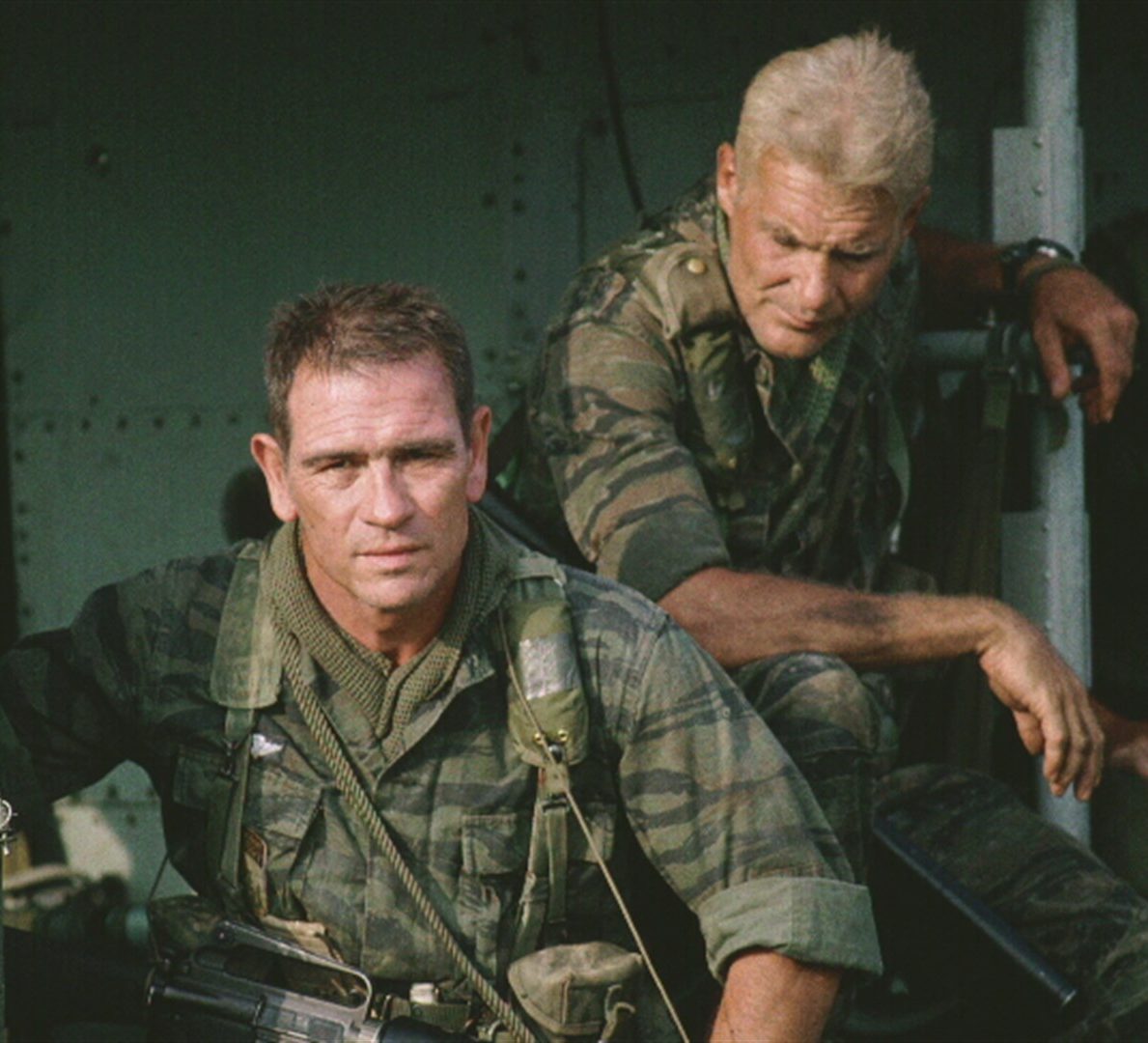
We’ve already mentioned the fact that Platoon was part of a trifecta of Vietnam War movies when it was released in 1986. What you may not know is that director Oliver Stone actually made a whole trilogy of connected Vietnam movies, beginning with Platoon. The second movie in Stone’s Vietnam trilogy is Born on the Fourth of July, which was released in 1989.
Born on the Fourth of July stars Tom Cruise, and relays the true story of Ron Kovic’s service in the Vietnam War, and his later years of anti-war activism. Heaven and Earth was released later in 1993, and follows the life of a Vietnamese woman whose village and life are turned upside down by the conflict. Heaven and Earth is also based on the autobiographical accounts of a real-life activist, this time Le Ly Hayslip.
4. The film could have saved Dino De Laurentiis’ studio
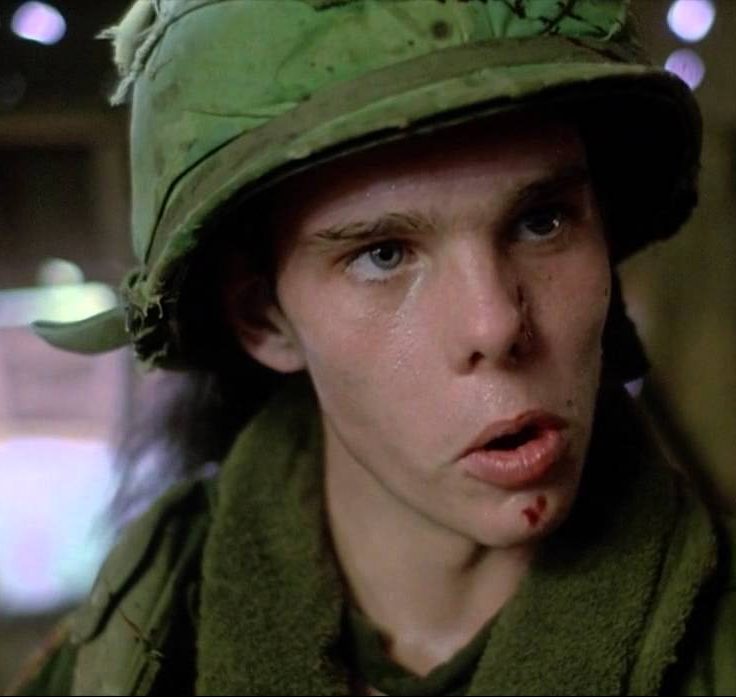
Before directing Platoon, Oliver Stone spent much of the early 80s working on movies for legendary producer Dino De Laurentiis. The projects he worked on included Conan the Barbarian in 1982, and Year of the Dragon just three years later in 1985. Stone agreed to work on these projects with the understanding that in return, De Laurentiis would agree to finance and produce Platoon.
Unfortunately for Stone, many De Laurentiis projects in that period were box office flops, resulting in Laurentiis’ whole operation shutting down. This change in circumstances meant that Stone had to find a new producer and source of funding for Platoon before it could be shot. However, had De Laurentiis taken a risk on Platoon then it could have saved his studio, given that Platoon made $138 million on a budget of just six million.
3. The whole movie was shot in order
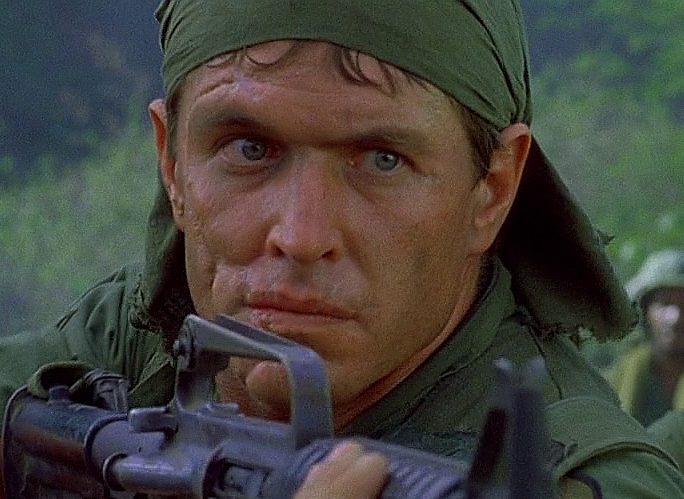
When we watch a movie, the events usually unfold in order from beginning to end, since that’s the way that makes the most sense. However, the skill of an actor is that they can make a character’s emotional journey across these events believable, even if the film is not shot in order. Productions where scenes are shot in chronological order are often more expensive, so many filmmakers never have the chance to run their productions that way.
Platoon did have the opportunity to shoot mostly sequentially despite its small budget, and things were done that way for a specific reason. Shooting in sequence meant that as each character died in Vietnam, the actor could leave the shoot and go home. For Charlie Sheen, this meant his shooting environment got steadily lonelier, bringing to life the emotions that his character would have been feeling.
2. Kevin Dillon and Charlie Sheen paid for surgery for the actor who played the disabled villager
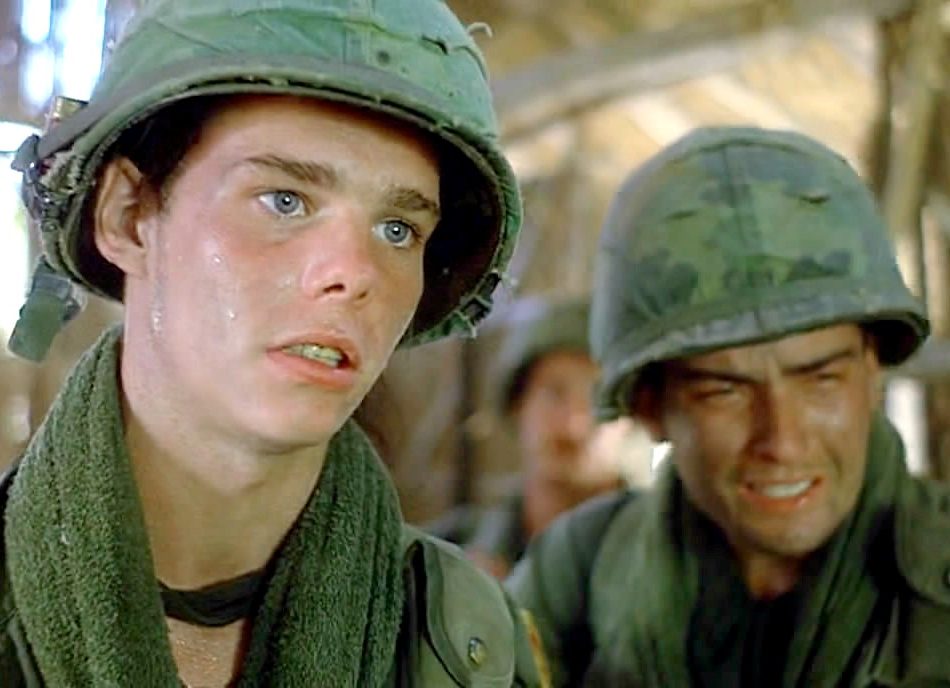
Like any war movie that chooses to focus on realism rather than triumphant emotions, Platoon features some harrowing scenes. These scenes are made even more devastating by the fact that they were all based on director Oliver Stone’s own personal experiences. Perhaps the most infamous scene in the film is when the soldiers make the decision to shoot at a boy’s feet, causing him to hop.
In the movie, the boy is blind, while the extra who was chosen to play him had limited vision due to cataracts. Unfortunately, the mother of the boy could not afford surgery to fix the child’s eyes, which made Sheen and Dillon feel guilty. In the end, the two actors banded together to pay for the child’s surgery on the mother’s behalf, out of their own pockets.
1. It was a huge hit at the box office and a big winner at the Oscars

On release in December 1986, Platoon went down a storm with critics and audiences alike. Having cost only $6 million to make, the film wound up earning $138.5 million from the US box office alone. It was also met with largely positive reviews, and garnered eight nominations at the Academy Awards. Platoon wound up taking home four of the biggest Oscars of the night, including Best Picture.
Oliver Stone was named Best Director, whilst Claire Simpson won the Best Editing Oscar. The film also won in the Best Sound category. Unfortunately for Willem Dafoe and Tom Berenger, they both lost out on the Best Supporting Actor award to Michael Caine in Hannah and Her Sisters.

